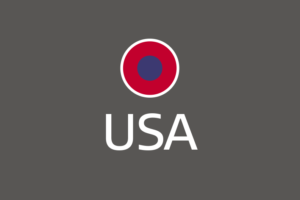U.S. Compliance News for California and New York State
 California Expands Supplemental Paid Leave for COVID-19
California Expands Supplemental Paid Leave for COVID-19
On September 9, Governor Newsom signed AB 1867. AB 1867 codifies the supplemental leave previously required for food sector workers in Executive Order N-51-20 and creates a new requirement for certain covered workers to receive supplemental paid sick leave. Under the expanded law, a “hiring entity,” defined as any private entity that has 500 or more employees or any entity, including a public entity, that employs health care providers or emergency responders as defined under the FFCRA, must provide up to 80 hours of supplemental paid sick leave to “full time” workers. Full time is defined as having either worked or been scheduled to work on average 40 hours per week during the two weeks prior to taking leave. Part time covered workers would receive supplemental paid sick leave based on their schedule (the number of hours normally scheduled to work over two weeks or where hours vary 14 times the average number of hours worked each day in the six months preceding the leave). Supplemental paid sick leave would be compensated at the highest of: 1) the worker’s regular rate of pay; 2) the state minimum wage; or 3) the local minimum wage. Supplemental paid sick leave may be capped at $511 per day and $5,110 in the aggregate. Also, to be eligible for leave, a covered worker must leave their home or place of work to perform work for the hiring entity. A covered worker could use supplemental paid sick leave if:
- The covered worker is subject to a federal, state, or local quarantine or isolation order related to COVID-19.
- The covered worker is advised by a health care provider to self-quarantine or self-isolate due to concerns related to COVID-19.
- The covered worker is prohibited from working by the covered worker’s hiring entity due to health concerns related to the potential transmission of COVID-19.
The bill prohibits a hiring entity from requiring a worker to use other paid or unpaid leave, PTO, or vacation time before using supplemental paid sick leave. It also provides an exception for workers already provided supplemental leave pursuant to Executive Order N-51-20 or federal or local law for the covered reasons. Additionally, a hiring entity may not have to provide supplemental paid sick leave if they have, as of March 4, 2020, provided some form of COVID-19-related supplemental paid leave that can be used for the reasons above and is paid at the required amount. A required posting and model notice will be available within 7 days of the effective date of the bill (10 days after signature). Employers can review AB 1867 (here).
New York Issues 2021 Paid Family Leave Premium Rates and Contribution Limits
On September 1, 2020, the New York Department of Financial Services (NYDFS) issued a decision regarding the rate and maximum contribution limits for Paid Family Leave (PFL) benefits beginning January 1, 2021. The decision provides that, beginning January 1, 2021, Family Leave Benefits will increase to 67% of the employee’s average weekly wage, up to 67% of the statewide average weekly wage, for up to 12 weeks of leave. The New York State Average Weekly Wage (NYSAWW) used for calendar year 2021 is $1,450.17; the annualized figure is $75,408.84. Additionally, the 2021 premium rate for Family Leave Benefits is 0.511% of an employee’s wages each pay period (which includes a 0.005% risk adjustment for COVID-19 claims paid) up to and not to exceed an annual maximum employee contribution of $385.34. This is an 89.26% increase from the 2020 premium rate of 0.270% of an employee’s wages, and a 95.88% increase from the 2020 annual maximum employee contribution of $196.72 per year. Employers should review the decision and ensure that they are collecting employee contributions consistent with this amount beginning January 1, 2021. A complete copy of the NYDFS decision can be found here.
This information is provided by Alliant, Asinta’s employee benefits consulting Partner in the U.S.
